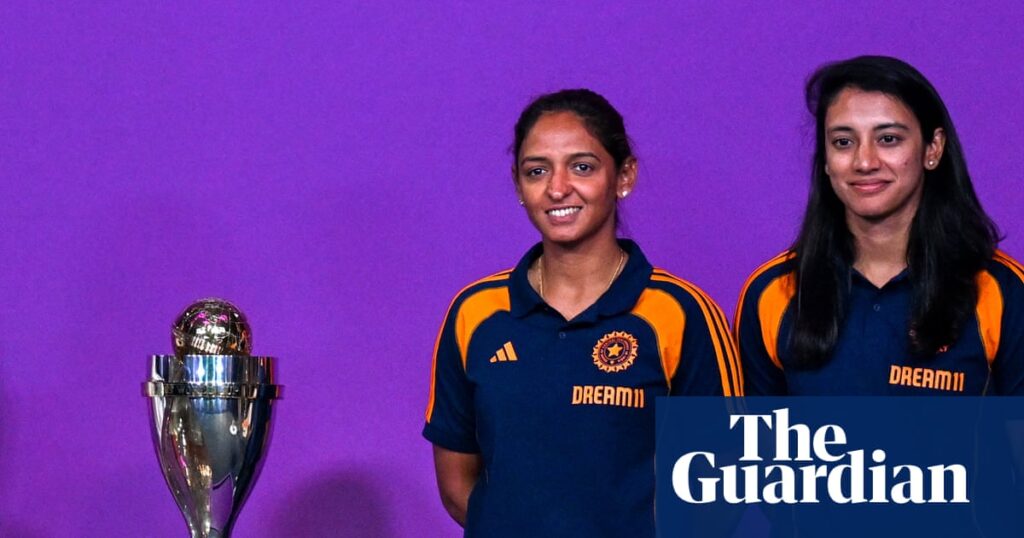Sue Kitchen has her flights and hotels booked for next month’s Women’s Cricket World Cup in India. Her excitement, however, has gradually dissolved into anxiousness as she waits for news of the match tickets going on sale. The ICC insists this will be the biggest Women’s World Cup yet. But with just over a month to go, travelling fans are grappling with last-minute surprises, and the players are preparing to make their way to unfamiliar, uninspiring venues.
In a Facebook group of women’s cricket supporters, Kitchen describes the planning process for her upcoming trip from England as a “nightmare”. Her sentiments are shared by other fans outside India, many of whom have already entered the ticket ballot for the 2026 Women’s T20 World Cup in England. Some have even abandoned their travel plans for India due to the logistical challenges.
Former Australia cricketer Pauline Bunce, who toured India for the 1978 edition of the tournament, wrote at the time in the Sportsweek magazine about the “mess” of playing in the subcontinent. The story, recently retrieved from the archives by cricket historian Ankit Verma, revealed how the visiting teams landed in the then fledgling cricketing nation only to find out the Women’s Cricket Association of India had not arranged a schedule and the government had denied permission for the matches.
Nearly half a century has passed since then and some things have changed. The ICC now governs the women’s game, India is a cricket-mad country and its governing body, the BCCI, is the richest cricket board in the world. But the upcoming women’s 50-over World Cup is marred by similar administrative issues as the 1978 event.
With 40 days before the first game, its venue and that of the final were under a cloud, before Navi Mumbai was announced as the replacement for Bengaluru late last week. The southern Indian city lost the hosting rights after a crowd crush at the M. Chinnaswamy Stadium in which 11 fans celebrating Royal Challengers Bengaluru’s IPL victory died.
Navi Mumbai, a satellite city to India’s financial capital Mumbai, is a redeeming addition to the list of venues otherwise bereft of major cricketing centres in the primary host nation. Other than the Sri Lankan capital of Colombo, which will host all of Pakistan’s games due to geopolitical reasons, the rest of the list is made up of Guwahati, Indore and Visakhapatnam – all non-metropolitan cities. The propensity of local people there to turn out for women’s games remains largely untested. Among these venues, only Visakhapatnam has hosted women’s ODIs, while three women’s T20Is were played in Guwahati in 2019. Indore has never hosted women’s international cricket.
To add to fans’ woes, last week’s schedule update also shuffled the venues for other games. Kitchen is now staring down cancellation costs and preparing to shell out more for fresh bookings much closer to her travel dates. In delaying the release of tickets, the organisers expect international fans to carry the burden of paying for flights and accommodation, as well as domestic connections, without even having their place in the stands secured. Seats at games not featuring the host nation face a serious threat of going empty, and the World Cup risks losing the charm and atmosphere that visiting fans decked out in all their colours bring.
The release of tickets for the 2026 Women’s T20 World Cup a year in advance suggests the constraints don’t lie with the ICC. To put things in context, similar organisational blemishes plagued the last men’s Cricket World Cup hosted by India in 2023. But while men’s cricket is a surefire crowd-puller in the country, the women’s game is at a formative stage where the organisers must play all their cards right.
after newsletter promotion
Taking the women’s game to as yet untested corners of India could indeed bring in a new audience and inspire more young girls to take up the sport. But bilateral series would arguably be better suited to this righteous consideration. Instead, the BCCI has chosen big venues in cities like Mumbai and Chennai to host those series in the post-Covid years, but barring the late inclusion of Navi Mumbai, they have been passed over for this tournament. A World Cup is too big a stage to take a punt on risking empty stands and a subdued atmosphere.
Cricket’s revered centres have embraced the women’s game in recent years. Images of Heather Knight and Meg Lanning lifting trophies at Lord’s and the MCG in front of packed crowds made a bold statement for cricket now equally being a women’s sport. To deny the current crop of the world’s best players and their fans the same opportunity – the iconic venues, the atmosphere, the memories – is to take a step backwards.


